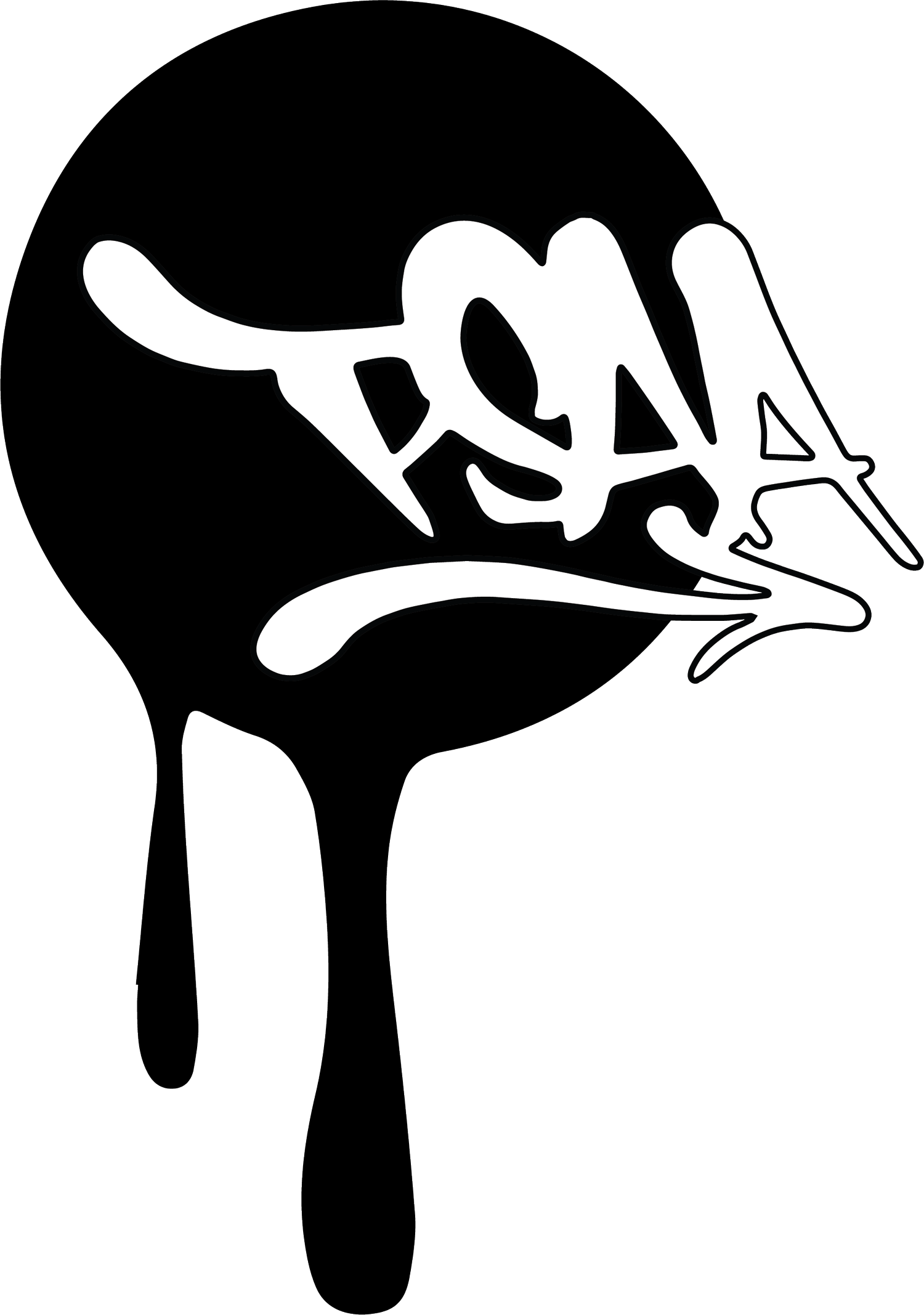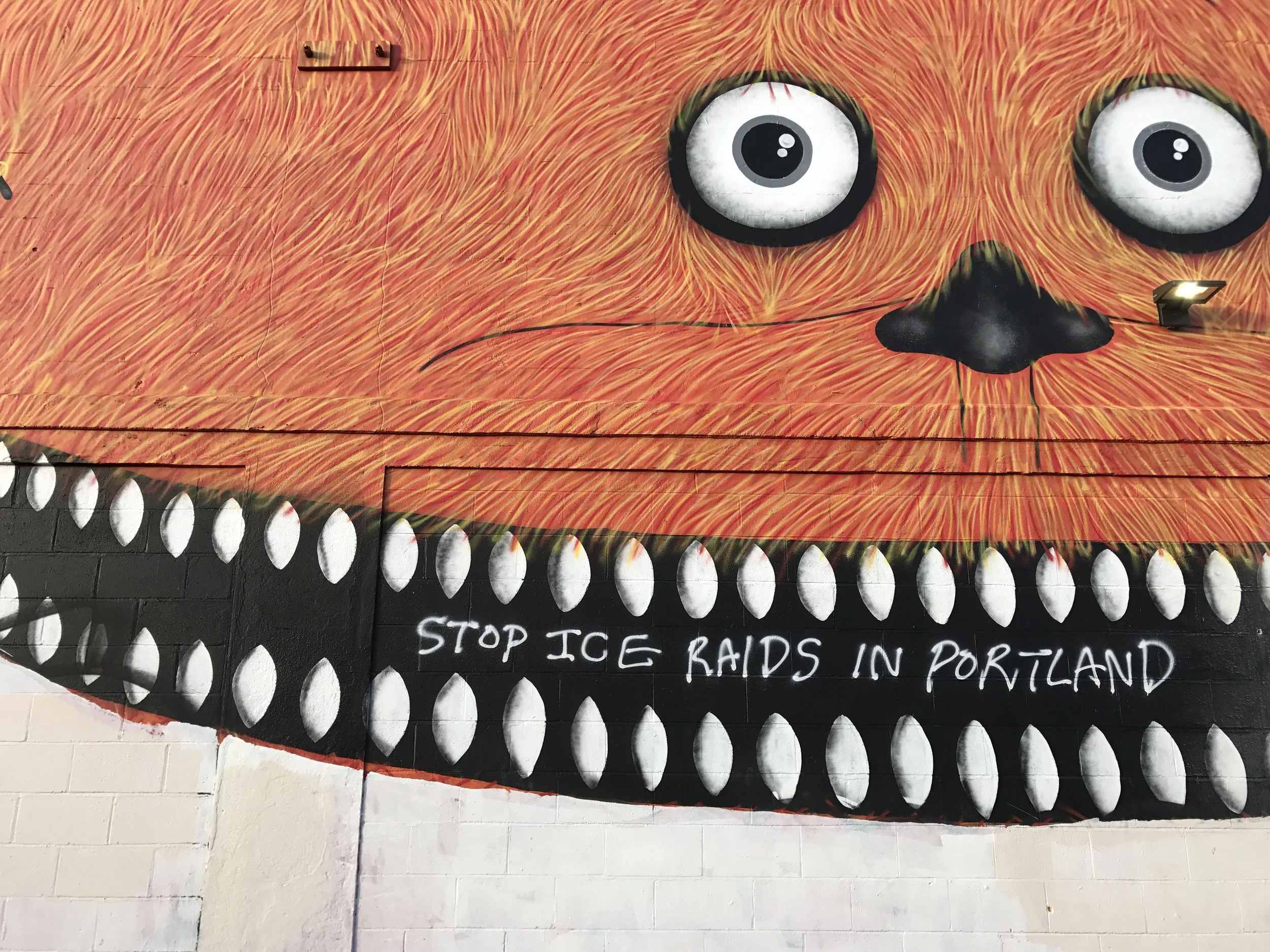The City of Portland manages graffiti complaints primarily though the Graffiti Program, which is operated under the Office of Community & Civic Life. This program works with residents and business owners to identify, report, and remove graffiti in the city. They also periodically provide free mural clear coatings to community groups and non-profits.
The City’s Graffiti Program has an annual budget that goes towards paying for personnel salaries, contracts with graffiti removal companies, and providing volunteer cleanup supplies. Although the Graffiti Program’s staffing has changed over the years, as of 2019 it employed one full-time program coordinator and a part-time assistant.
The Willamette Week published data obtained via a public records request. This data shows that the Graffiti Program has logged 99 instances of what they classified as “hate or political graffiti” in Portland since Nov. 1, 2016.
The data showed that almost half of the graffiti reported under this classification during this time (46 of the 99 instances) included some sort of negative reference to Trump. The most common tag that is being classified as “hate or political graffiti” in Portland since the election is "Fuck Trump." The second most common, was swastikas with 24 reports.
At first glance, the “rise” of swastikas appearing on our streets is obviously very concerning. We would however wonder, how many reports of these there were prior to the election, on average. We have unfortunately seen swastikas sprinkled throughout Portland’s graffiti for years. Oregon has historically been a hot bed of KKK activity and was founded as a “whites-only” state. In the mid 1920’s, the KKK's membership was estimated between 14,000 to 20,000 members. During that time, Oregon’s Governor Walter M. Pierce (1922-1926) overtly supported by the Klan and promoted the Klan’s agenda. It was not until 1999, when the Oregon state legislature held a "Day of Acknowledgement" to recognize the past discrimination earlier legislatures had sanctioned, and finally offically removed language from the state's constitution preventing African Americans from owning property in Oregon.
What is concerning PSAA about this report, when it comes to graffiti advocacy, is that the Graffiti Program is lumping “Fuck Trump” graffiti (and other similar anti-Trump graffiti) in together with swastikas and other real hate graffiti directed at minorities – all under this broad umbrella of “hate or political graffiti.”
At a heated public meeting on March 3rd, 2017, the Graffiti Program made a presentation to City Council about the need for more graffiti abatement funding, citing first and foremost a “significant increase” in reports of “hate graffiti.”
This knee jerk reaction to call for increased resources for graffiti abatement correlates with reports that Oregon leads the nation with an increase of “hate incidents’ that have swept the U.S. in the month since Trump was elected.
During a City Council meeting, Commissioner Nick Fish picked up on this blending of these two types of graffiti, asking ONI what they classified as “hate” or “biased” graffiti and if they had a “working definition” of it. In response, the Graffiti Program representative said that hate graffiti was “against historically oppressed groups.”
So, based on their own definition, is the City of Portland saying that Trump and his cabinet are a “historically oppressed group?” Is the fact that they City of Portland is lumping anti-Trump graffiti in with real hate graffiti against historically marginalized and oppressed groups inflating the counts?
We see “Fuck Trump” and “Not my president” tags as understandable public outcry against a possibly illegitimate presidency that represents the wealthy 1% as very different from swastikas or a ‘Fuck Feminism” tags. Although these may all be “political” in nature, there is a huge difference when it comes the symbolism and motivations involved – either standing up against oppression or promoting it.
We highly suggest the City of Portland further specify and modify their working definition of “hate graffiti” and clearly separate real hate graffiti that targets "protected classes" as outlined by the Civil Rights act of 1964 and Oregon law (Chapter 659A), from general political graffiti that is not directed at these protected and oppressed groups.
To compare Trump to groups that have been subjected to generational hate and mass genocide is an insult. Do not sound un-needed alarms to an already distressed and distraught community. And do not use inflated and skewed data as a tool to argue for more graffiti abatement funding.
Just this week, the home of an Iranian-American man in Troutdale was targeted by anti-Muslim hate graffiti. This type of targeted and hateful graffiti is the real concern and crime. The City of Portland should be focusing on preventing and prosecuting real hate graffiti, and supporting programs like the new Portland United Against Hate to develop collaborative strategies to protect vulnerable communities from hate and intimidation. All of this comes at a bad time as ONI is under public scrutiny after the recent and surprising resignation of its Director after a scathing audit of the agency.
It is also important to understand the larger context in which the Graffiti Abatement Program is operating within and how its funding has changed over time, along with the amount of graffiti found on Portland streets.
From 1995 to 2013 there were a total 10,341 incidents of graffiti reported in the City of Portland, which accounted for 8% of the total counts of vandalism. Between 2004 to 2013, vandalism in Portland decreased or remained stable except in a few neighborhoods.
Between 2009 and 2017, the number of graffiti reports being made has increased, but this could partially be due to the implementation of the pdxReport app making it much more easy for people to report things like graffiti and potholes.
Between 2009 and 2012 the budget for the Graffiti Program also increased. However, this increase in graffiti abatement spending did not have that much effect on decreasing the amount of graffiti reported.
For instance, in 2011-2012 GAP’s budget spiked to $527,711. The increase of the GAP budget in 2011 was to support the salaries of two Police officers dedicated to graffiti investigations. This huge increase in spending was justified due to reactionary concerns after Portland hosted a large graffiti art show in the summer of 2011. The Special Delivery show, organized by Endless Canvas an Oakland-based street art collective, drew artists to Portland from all around the country and was one of Portland’s largest art events in the past decade. After this spike in graffiti abatement spending the number of graffiti reports made in 2012 went down some, but still not to pre-2009 levels.
Over the past few fiscal years, between 2014 and 2017 the Graffiti Program budget has remained fairly consistent, around 350k, as have the number of reported cases of graffiti at about 8000 per year.





